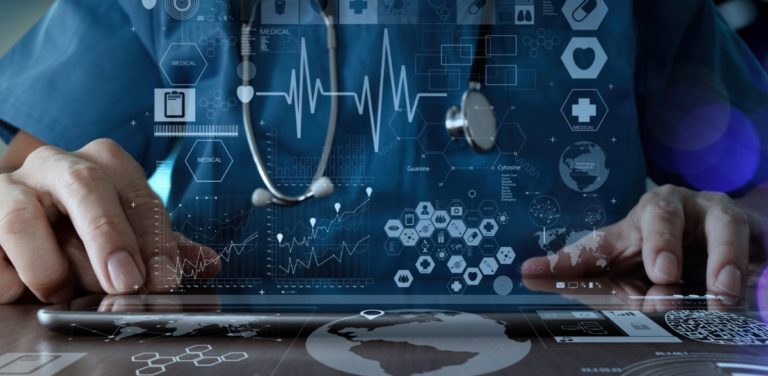Medical sphere is a unique and complicated one. You can take two different clinics, laboratories, surgeries or therapist offices and they will probably have different standards of interacting with the data and clients. And this is not the only difference those healthcare institutions will demonstrate. They all may have opposite approaches to business, payment structures, professional policies and even software systems.
Every medical institution has its own needs and requirements, and the only thing they all are guided by is general policies and terms declared by each separate country all over the world. So when it comes to software development for medical companies, it is all about diversity and latest technologies. These days it is crucial to take good care of the data, make sure it is secure and the exchange of it is easy. And speaking about clinical applications and data, it is crucial to discuss the HL7 standard in detail. So, without further ado, let’s take a look at HL7, what it implies, why it was created, its challenges and implementation.
What is HL7?
HL7 means Health Level Seven, and basically it is a standard for exchanging the health-related data between different medical applications. HL7 defines the data transmission format, it sets the language, structure and type of the data that should be selected for the seamless integration between several systems. This standard is recognized in the world and widely used by numerous organizations.
Describing HL7 it is necessary to mention that the number in the abbreviation was not selected randomly, and it defines the crucial sections which correspond to the set of rules and standards. Let’s take a closer look at each section to get a better understanding of HL7.
- Primary standards This section is about primary benchmarks for systems integration and effective compliance methods that should be used.
- Foundational standards This section helps to understand the core standards and technology infrastructure that is supposed to be used by organizations.
- Clinical & Administrative domains It is helpful for providers since it explains document standards, provides structured documents and lets you link them with messaging standards.
- Medical systems profiles This section explains how main medical systems like EHR function and how to manage them through profiles of different levels. The provided standards also describe functional models for EHR.
- Implementation guides In this section you will find standards of solutions implementation and the documentation you should pay special attention to.
- References This one offers an explanation of the rules and standards used for the development of various programming structures and software. Among those standards one can find tech specifications and development guidelines.
- Education and awareness Its aim is to help educate users about the development and offer tools for easier adoption of all HL7 standards.
Commonly used standards
Before the development of your custom medical solution it is preferable to understand all HL7 categories on a deeper level. This can help you end up with top-notch software that meets not only all your business needs but also the modern standards and requirements. HL7 is crucial because it helps to achieve a great level of interoperability between all systems used in a certain medical institution.
Speaking about one more benefit of HL7 implementation is that all your data will always be consistent, up-to-date and the same on all used systems. Thanks to HL7 standards you will be able to ensure high accuracy of documents and improve not only client service, but also the workflow of your healthcare organization. We have selected some crucial HL7 standards that are commonly used and should be known:
How it all works

While it is really easy to find information about all HL7 standards, some people feel confused trying to comprehend how they all function and what they are for. To explain it better, let’s take an analogy – Internet. This worldwide web connects millions of various websites and even lets them exchange data. Well HL7 is like the Internet of medical things and its main function is to link healthcare data uniformly.
We all understand that the code and hardware let our browsers display the information of the website. Everything works in the background and you are not aware of the constantly ongoing processes. The same is with HL7 standards. They help specialists to create uniform data and let users access it easily (if they have required rights to do so). Why is HL7 so great? Because it makes patient services better. A patient can visit different doctors but he doesn’t need to carry all his healthcare records with him.
Thanks to HL7 healthcare providers can seamlessly exchange the electronic healthcare data. Let’s say a patient is supposed to go to a lab and get tested. The results of those tests can be electronically transferred to a doctor who asked a patient to visit a lab and also they can be added to electronic healthcare records of that patient. So no data will get lost of confused.
Who are the users of HL7 standards?
First of all it is necessary to highlight that HL7 can be called an international standard since it is recognized and used by medical organizations in more than 27 countries all over the world (more actively – in the US). And speaking about the users who can benefit from this standard, it is possible to divide them into several large groups.
- Clinical specialists who are involved in the processes of data transfer.
- Clinical interface specialists responsible for creating tools for data movement, and applications that need to share and exchange data with other clinical systems or providers easily.
- Specialists who work with health informatics, explore the logic of healthcare and creation of clinical knowledge. They also may be involved in the creation of a hierarchy of collected healthcare knowledge, terminology and workflow.
- Governmental or political institutions that need to transfer all crucial medical data to a new area that is not covered by the current interfaces.
Real benefits of HL7
You may be wondering what’s so great about HL7 standards and why you actually should be implementing them. The first and foremost advantage of HL7 is that they allow the creation of reliable medical systems for transfer of critically important information without spending too much money on them. And those tools for management of healthcare data and internal clinics processes can help to improve clinics productivity and level of patient service.
Thanks to HL7 all systems that are used by clinics or any other healthcare organizations can become connected. This means that patients will have to do less paperwork every time they visit a doctor. All medical records can now be handled in electronic format and easily accessed by a doctor whenever it is needed. Of course all smart solutions used by clinics cannot be named a creation of HL7. After all it is just a set of standards. However, those rules help to standardize the procedure and regulate some key processes which make it easier for software developers to implement solutions into the clinic’s environment. HL7 is a critically important component of digital transformation.
These days many healthcare organizations have their own HL7 interface engines that can be called a hub providing the easiest way to route and translate the data between the several linked solutions. The most advanced interface engines let you achieve the best level of communication between the applications, improve the data exchange environment and connect solutions internally and externally.
Before HL7 appeared it was really hard to perform data exchange because you needed customized interface systems that should have been set manually by professional technicians. This was very time and cost consuming.
FAQ
To sum it up
Healthcare sphere is very demanding. If it needs a software solution, then it has to be very advanced and you should be able to connect it to other already functioning clinics systems. And that is one of the greatest challenges of today’s software optimization for healthcare organizations.
You need not only to introduce a new system in the workflow, but also make it connect with other solutions and exchange the data effectively. This would have been a really difficult task if not for the HL7 standards that regulate many processes and help to simplify the implementation of interfaces between various medical solutions.






